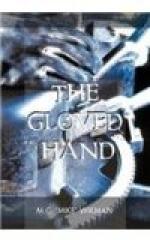The battery of cameras was clicking at Swain, and two or three artists were making sketches of his head; there was a great bustle as the reporters gathered up their papers and hurried to their cars to search for the nearest telephone; the jury walked heavily away in charge of an officer to get their lunch at some near-by road-house; Sylvester was gathering up his prints and photographs and putting them carefully in his pocket; Simmonds was replacing the blood-stained clothing in the suit-case, to be held as evidence for the trial; but Swain sat there, with arms folded, staring straight before him, apparently unconscious of all this.
Goldberger looked at him closely, as he came down to speak to me, but Swain did not glance up.
“I can parole him in your custody, I suppose, Mr. Lester?” the coroner asked.
“Yes; certainly,” I assented.
“Sylvester’s evidence makes it look bad for him.”
“Will you introduce me to Sylvester? I should like to go over the prints with him.”
“Certainly;” and, a moment later, with the prints spread out before us, Sylvester was showing me their points of similarity.
Godfrey came forward while he was talking and stood looking over his shoulder.
I had heard of finger-print identification, of course, many times, but had made no study of the subject, and, I confess, the blurred photographs which Sylvester offered for my inspection seemed to me mighty poor evidence upon which to accuse a man of murder. The photographs showed the prints considerably larger than life-size, but this enlargement had also exaggerated the threads of the cloth, so that the prints seemed half-concealed by a heavy mesh. To the naked eye, the lines were almost indistinguishable, but under Sylvester’s powerful glass they came out more clearly.
“The thumb,” said Sylvester, following the lines first to the right and then to the left with the point of a pencil, “is what we call a double whorl. It consists of fourteen lines, or ridges. With the micrometer,” and he raised the lid of a little leather box which stood on the table, took out an instrument of polished steel and applied it to one of the photographs, “we get the angle of these ridges. See how I adjust it,” and I watched him, as, with a delicate thumbscrew, he made the needle-like points of the finder coincide with the outside lines of the whorl. “Now here is a photograph from the other robe, also showing the thumb,” and he applied the machine carefully to it. “It also is a double whorl of fourteen lines, and you see the angles are the same. And here is the print of the right thumb which your client made for me.” He applied the micrometer and drew back that I might see for myself.
“But these photographs are enlarged,” I objected.
“That makes no difference. Enlargement does not alter the angles. Here are the other prints.”




